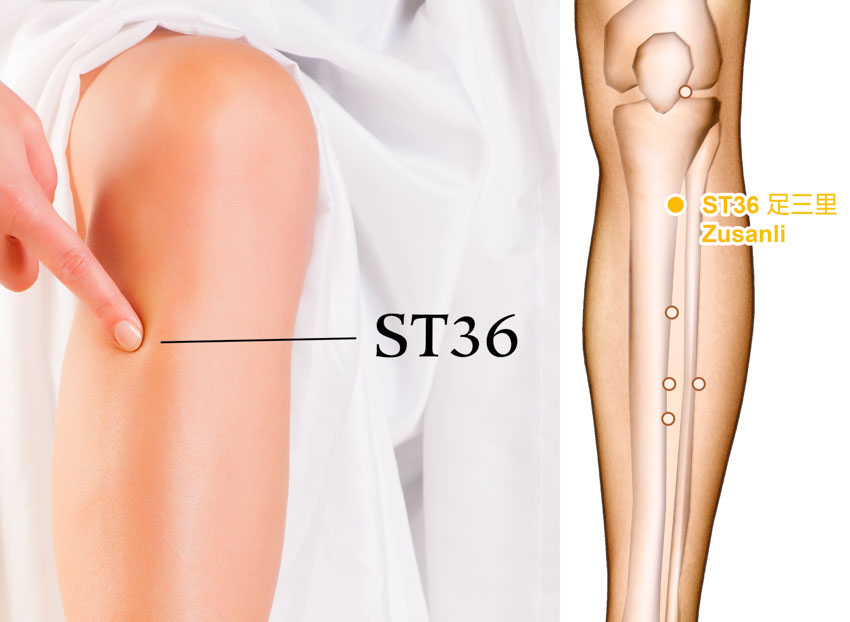
Acupuncture point stimulation is effective for the treatment of diabetes. In a laboratory investigation, laser acupuncture outperformed rosiglitazone for the inhibition of β-cell apoptosis. In an independent clinical investigation, true TENS acupuncture point stimulation outperformed sham acupuncture point stimulation for regulating glucose levels and improving insulin resistance.
A controlled laboratory investigation conducted by researchers at the Henan University of Science and Technology found that acupuncture outperformed the drug rosiglitazone for inhibiting β-cell apoptosis in type 2 diabetic rats. [1] Three study groups were compared.
The first group received 0.9% sodium chloride (0.2 mg/kg). The second group was given rosiglitazone (0.2 mg/kg). The third group received laser acupuncture. Rosiglitazone is an insulin sensitizing agent used to treat type 2 diabetes. Fasting blood glucose (FBG) levels, serum cholesterol (TC) and triglyceride (TG) levels, and β-cell apoptotic rates were used to measure treatment outcomes.
After treatment, the FBG levels of the rats in the laser acupuncture group were lower than those of the rats in the rosiglitazone and sodium chloride groups, indicating laser acupuncture had a significant effect on reducing blood sugar. The serum TC and TG levels in the blood of the rats in the laser acupuncture group were significantly lower than those of the rats in the other two groups, showing that laser acupuncture significantly reduced blood lipids in type 2 diabetic rats.
The β-cell apoptotic rate was determined by counting enzyme-labeled apoptotic beta cells under a microscope. The β-cell apoptotic rates for the laser acupuncture group and the rosiglitazone group were significantly lower than that of the sodium chloride group. The rate in the laser group was lower than that in the rosiglitazone group, but there was no significant statistical difference between the two groups. The results show that laser acupuncture effectively inhibits beta-cell apoptosis.
Laser acupuncture is the stimulation of traditional acupoints with low-intensity, non-thermal laser irradiation. [2] Since stimulation techniques and parameters can be standardized, it is also simple to administer. [3] In this study, bilateral Housanli (ST36, equal to Zusanli in humans), Neiting (ST44), and Yishu (EX-B3) were selected for laser acupuncture. A GaAlAS semiconductor laser with a wavelength of 630 nm and an output power of 10 mW was used. Each acupoint was given laster stimulation for 15 minutes every two days for 28 days. A total of 14 treatment sessions were applied. The researchers concluded that “laser acupuncture can effectively inhibit β-cell apoptosis in type 2 diabetic rats.”
At HealthCMi, we find this study an interesting investigation of non-invasive laser acupuncture stimulation for the treatment of diabetes. We would like to see more investigations into this concern to confirm the results. In addition, a human clinical trial comparing laser acupuncture with needle acupuncture will help to elucidate differences between the different forms of stimulation.
In a human subject trial, Man et al. conclude that TENS stimulation at acupuncture points regulates plasma glucose and improves insulin resistance in patients with hyperglycemia (high blood sugar). The results were confirmed by blood glucose levels, plasma insulin levels, and the homeostasis model assessment (HOMA) index. [4]
The study was a single-blinded, randomized, placebo-controlled investigation comparing acupuncture with sham acupuncture. A total of 60 patients were treated and evaluated in the study. They were randomly divided into a treatment group and a control group, with 30 patients in each group. There were no significant statistical differences in age (44.4 ±8.2 vs. 43.6 ±6.6 years), weight (64.3 ±11.2 vs. 63.1 ±9.7 kg), or other demographics between the two groups before treatment.
The primary acupoints used in the study were the following:
- ST36 (Zusanli)
- SP6 (Sanyinjiao)
Patients of both groups received transcutaneous electrical nerve stimulation (TENS) at the above acupoints. The electrodes placed for the treatment group were connected to the TENS stimulator (HANS LY257) for 30 minutes, with a continuous wave at a frequency of 15 Hz and an intensity of 10 mA. For the control group, the electrodes were placed on, but not connected to, the stimulator. As a single-blinded intervention, patients in both groups were informed that the electrodes were connected to the TENS stimulator.
After treatment, plasma glucose levels were significantly reduced in the treatment group after TENS for 30 minutes. There were significant statistical differences when compared to the control group 30, 60, and 90 minutes after discontinuation of TENS application. The plasma insulin level in the treatment group was significantly lower than the control group at the 90-minute and 120-minute time points. The HOMA index in the treatment group was significantly lower than that in the control group at 60-minute and 90-minute time points. The researchers conclude that, “Application of TENS on bilateral ST36 and SP6 acupoints is effective for preventing high blood sugar and improving insulin resistance.”
References:
[1] Man KM, Man SS, Shen JL, et al. (2011). Transcutaneous electrical nerve stimulation on ST36 and SP6 acuppoints prevents hyperglycaemic response during anaesthesia: a randomized controlled trial. Eur J Anaesthesiol, 28(6):420-426.
[2] Siposan, D. (2013). Lasers in neurology. In Lasers for Medical Applications (pp. 573-603). Woodhead Publishing.
[3] Dominik Irnich, David Euler, Jochen Gleditsch, Winfried Banzer, Jürgen Bachmann. (2013). Acupuncture and related procedures. Myofascial Trigger Points (pp. 179-232). Churchill Livingstone.
[4] Xiong G, Xiong Ll, Li XZ. (2016). Effects of low intensity laser acupoint irradiation on inhibiting isletbeta-cell apoptosis in rats with type 2 diabetes. Laser Physics, 26(9):095605.


